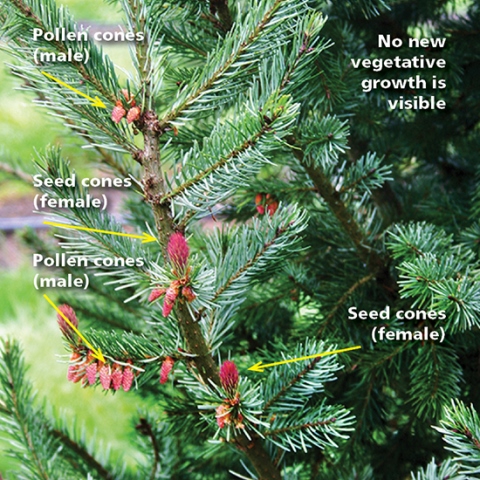On Wednesday, May 28, the Center for Urban Horticulture at the University of Washington hosted the Sixth Annual Urban Forest Symposium: “Climate Change and the Urban Forest”. This sold out, one-day seminar featured many excellent speakers presenting on topics such as climate modeling, forecasting of pest and disease issues, the need for experimentation with new species and the need to develop tree-friendly landscape designs to mitigate for environmental stresses to vegetation. As they say however, you had to be there. If you missed out, or if you’re still hungry for related information, then check out the following article reprinted from Washington DNR’s flagship blog, “Ear to the Ground”.
Can we predict how future climatic changes will affect the growth of important Northwest tree species?

Mathematical models developed by area researchers show great promise in predicting how future climate changes will affect the timing of the budding and flowering of coniferous trees here. That’s important knowledge because conifers, such as Douglas fir, are important to Washington State’s economy and environment.
DNR’s Meridian Seed Orchard, southeast of Olympia, is a major source of tree seeds for state forestlands and small family forestland owners. Owned and operated by DNR, the orchard produces seed for western red cedar, noble fir, Douglas fir, ponderosa pine, western larch, western white pine, and other coniferous tree species used to replant after timber harvests around the state.
Meridian Seed Orchard also is an efficient and reliable resource for collecting data to develop climate models because the seeds it gathers and grows come from many different areas and elevations in Washington. DNR’s self-funded Webster Forest Nursery uses seed from Meridian to produce between 8 million and 10 million seedlings annually to plant after timber harvests on state trust lands and small, privately-owned woodlands. The secret to successful planting is matching tree seedlings to meet the many different weather and soil zones around the state.

In an effort to establish predictability about when these trees will bud and flower, research foresters at the USDA Pacific Northwest Research Station in Olympia work closely with DNR’s Meridian Seed Orchard. Data collected for several years has helped researchers in both agencies develop models to try and predict the date of spring bud burst and flowering as the climate warms. Land managers can use these models to make “climate-smart” decisions to better match the tree species they will plant on specific sites.
Researchers at the Meridian Seed Orchard monitor site temperatures and the timing of the appearance of cones for several tree species. Projections for warmer seasons year round in the Pacific Northwest accompanied by changes in the amount of regional precipitation, could have serious implications for Douglas fir and other coniferous species that depend on optimal chilling and warming growing conditions in the winter to trigger spring growth. Without enough winter chilling, Douglas fir won’t leaf out normally in the spring.
Warm winters can cause other problems, too. Trees that burst bud earlier than the species’ historical norm may be at risk for damage by late spring frosts. On the other hand, growth can be stunted if trees burst bud late as there will not be enough time for the shoots to fully grow before the soil dries in the summer.

The economic impact to the state due to climate change could be significant considering that Douglas fir is the dominant commercial species in Washington as well as one of the most ecologically and economically important trees in Western North America. In 2013, Douglas fir timber valued at $935 million made up 45 percent of the total harvest in Washington State. Recent estimates indicate that wood products manufactured annually by mills in the state that use new timber are worth approximately $5 billion. Douglas fir is preferred by many foreign customers – so much so that 71 percent of the 1 billion board feet of logs that Washington exported in 2012 was Douglas fir.
